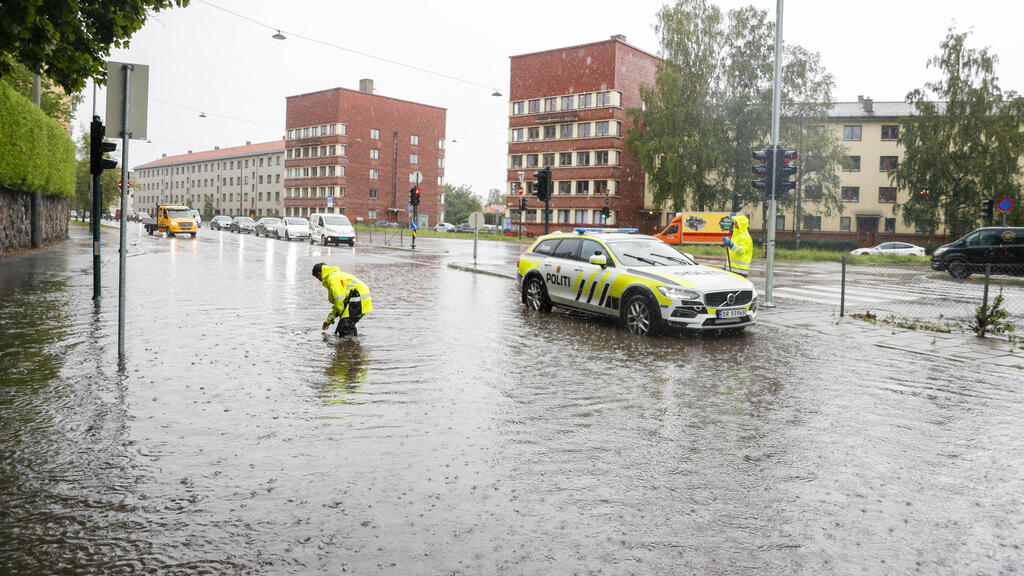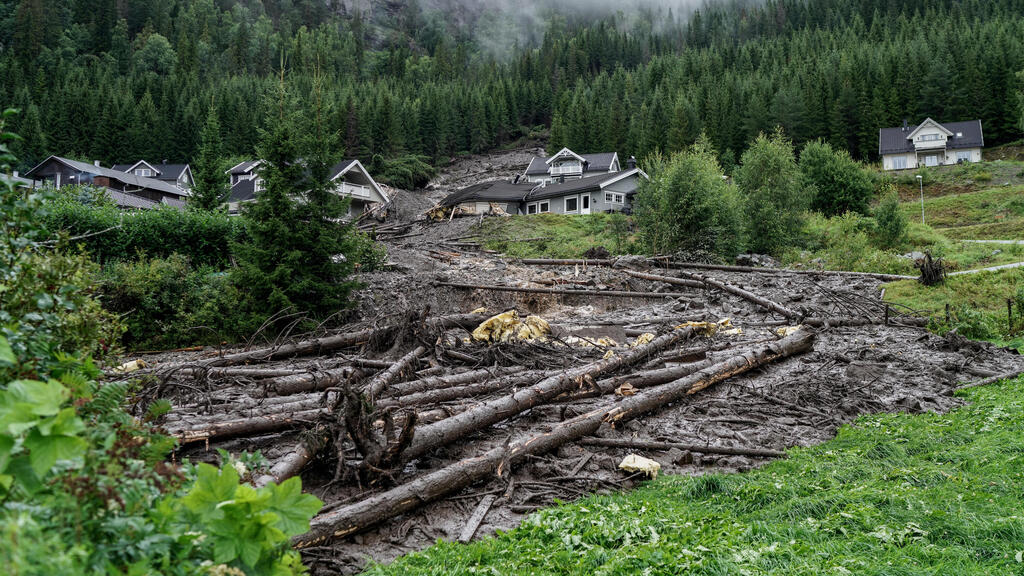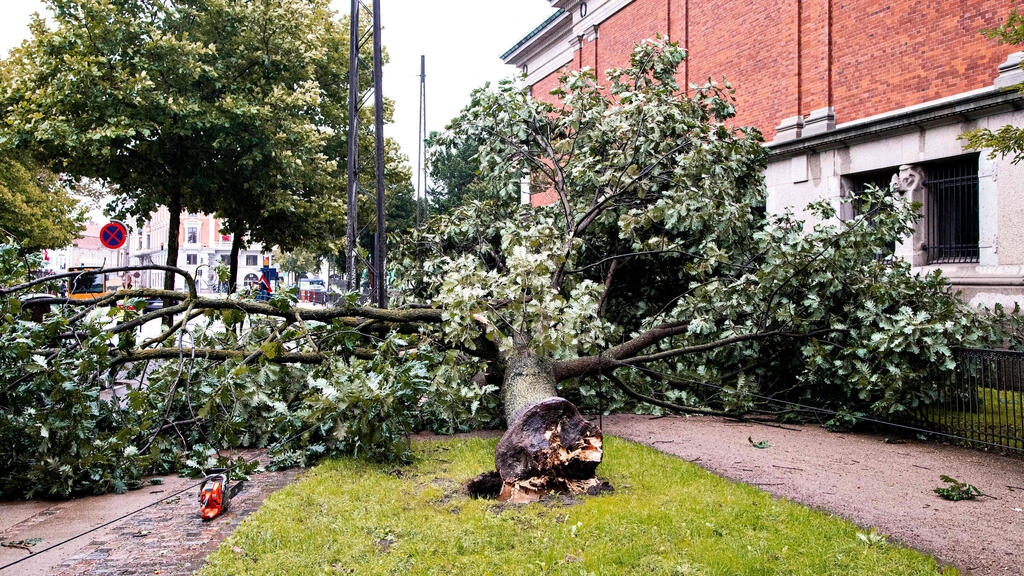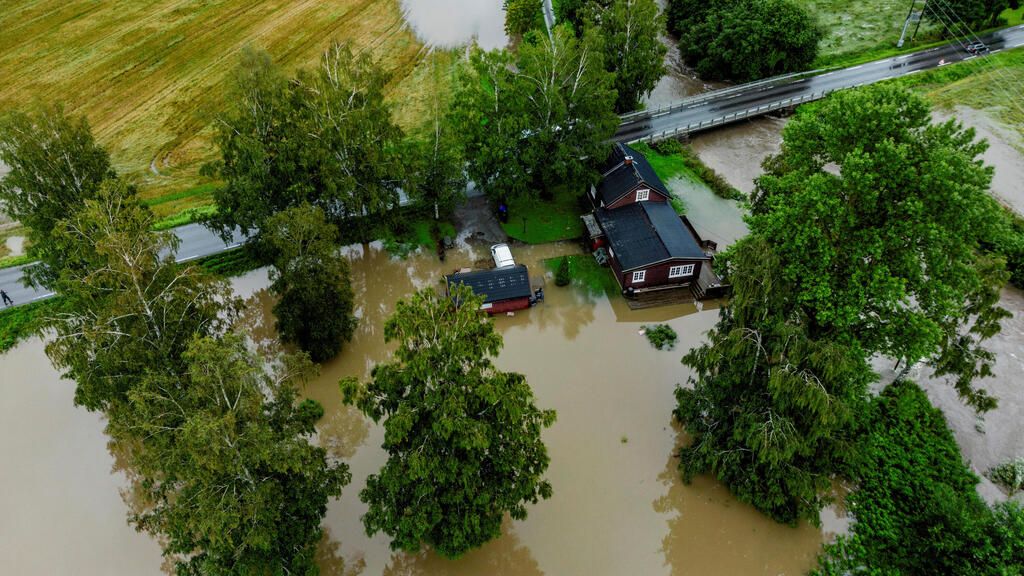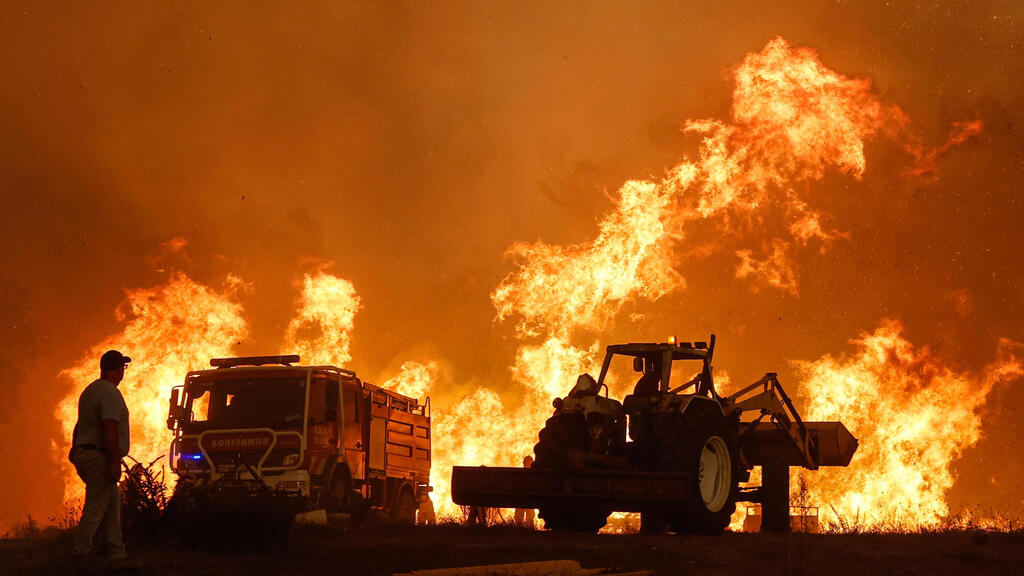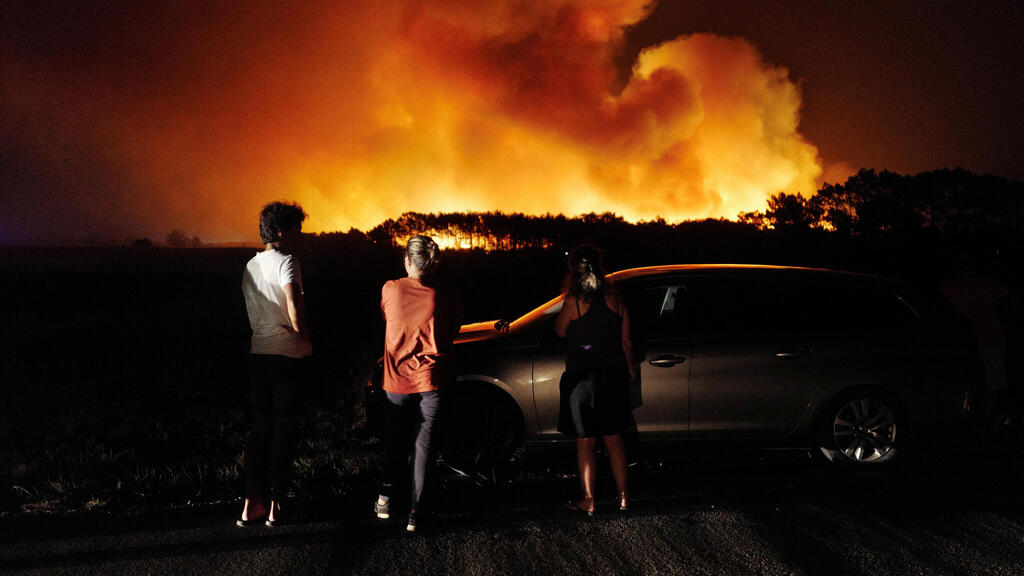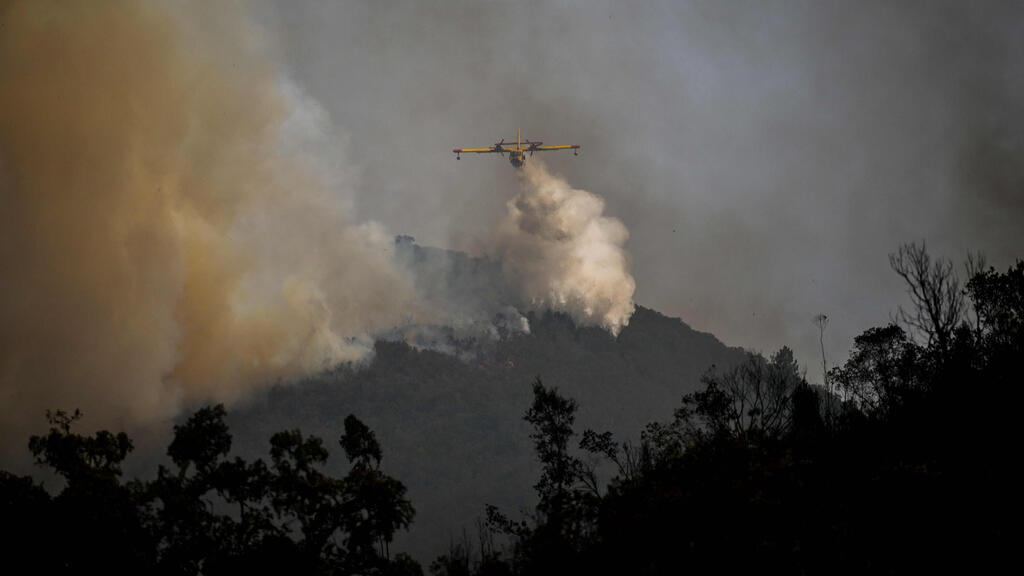Getting your Trinity Audio player ready...
Norwegian authorities warned Tuesday to prepare for "extremely heavy rainfall" after Storm Hans caused two deaths, ripped off roofs, and upended summertime life in northern Europe.
More stories:
Strong winds continued to batter the region along with rains, causing a lengthy list of disruptions in Norway, Denmark, Sweden, Lithuania, Finland, Estonia and Latvia. Ferries were canceled, flights were delayed, roads and streets were flooded, trees were uprooted, people were injured by falling branches and thousands remain without electricity.
In Oslo, officials urged people to work from home. On its website, the Norwegian Water Resources and Energy Directorate warned of "extremely heavy rainfall" in the country's south, adding "unnecessary traffic should be avoided."
"This is a very serious situation that can lead to extensive consequences and damages. There will be extensive flooding, erosion damage and flood damage to buildings and infrastructure," it said in English on its website.
In Finland, authorities urged people to rethink whether “it is necessary to go out” to sea, Ville Hukka, a spokesperson for the Gulf of Finland Coast Guard District was quoted by the Hufvudstadsbladet newspaper.
SMHI, the Swedish Meteorological and Hydrological Institute, on Tuesday, issued a red warning for parts of central Sweden, signaling “very large amounts of rain causing extremely high flows in streams and ditches in several places.”
On Monday, a 50-year-old woman was killed in Lithuania by falling trees near the Latvian border. In central Sweden, a train was partly derailed because the embankment under the rails had been washed away. Three people were slightly injured.
Also in Latvia, near the Belarus border, a second person died on Monday when a tree fell on him, Latvian television reported; he died of his injuries. The man was not further identified.
In Estonia, nearly 10,000 people were without power Tuesday morning, according to the Baltic News Service, the region’s main news agency.
Norwegian authorities kept the extreme weather warning alert at its highest level in southern Norway due to heavy rain, mudslides and flash floods. They also sent out text messages in several foreign languages, including English, to holidaymakers warning of the foul weather.
Norwegian Prime Minister Jonas Gahr Støre late on Monday called it “a very serious situation. We see floods and destruction. There is reason to expect that this will last another day,” he said.
Meanwhile, millions of people in parts of Portugal and Spain opted to stay inside on Tuesday, the second day of a heatwave sweeping the Iberian Peninsula during peak tourist season that has spurred the spread of wildfires.
In Portugal, authorities declared some 120 municipalities in the north and central areas of the country's interior, as well as in the popular holiday destination of Algarve in the south, at maximum risk of wildfires due to the scorching heat.
High temperatures, combined with strong winds, hampered efforts by more than 1,000 firefighters to extinguish a fire that started on Saturday near Odemira in the Alentejo region but has since spread southward to the Algarve, forcing the evacuation of at least 1,400 people.
9 View gallery
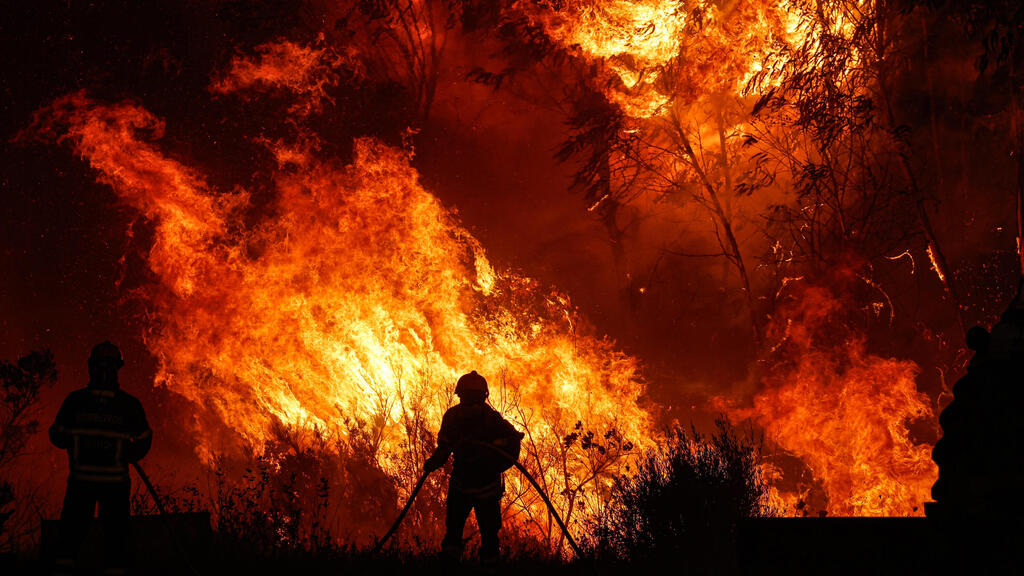

Some 120 municipalities in the north and central areas Portugal are at maximum risk of wildfires due to the scorching heat
(Photo: EPA/Luis Forra)
Weather agency IPMA also put three districts in the northeast on red alert for high temperatures.
On Monday, thermometers in the central towns of Portalegre and Santarem broke five-year local records at 42.1° C (107.8° F) and 46.4°C respectively, the latter just short of the national record of 47.3°C set in August 2003.
Spain's weather agency AEMET said the southern province of Cordoba could see temperatures of up to 44°C on Tuesday and warned the heatwave would reach its peak on Wednesday, affecting almost the entire country.
The Copernicus Climate Change Service (C3S), funded by the European Union, has reported that the average global temperature in the month of July 2023 was the highest ever recorded. Last month, the highest single-day temperatures were also measured, with July 6 being designated as the "hottest day in history."
According to overwhelming scientific consensus, heatwaves are becoming more frequent, intense and spread out across seasons due to climate change.


